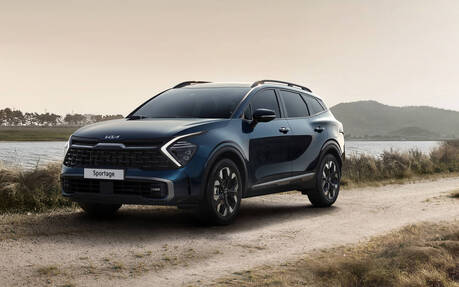2023 Kia Sportage: More Juicy Details are Confirmed
After releasing the first pictures of the new, fifth-generation Sportage a few weeks ago, Kia is now sharing more details and there is plenty to cover.
Set to go on sale next year as a 2023 model, the redesigned Sportage is completely different from its predecessor and also much more sophisticated, starting with what’s under the hood.
- Also: 2023 Kia Sportage Unveiled With Spectacular New Style, Interior
- Also: Kia Follows Hyundai’s Lead With Engine-related Recall
One Turbo, Two Hybrids
Kiss the current engines goodbye as they will be replaced by a turbocharged 1.6-litre unit producing 177 horsepower and 195 pound-feet of torque via a seven-speed dual-clutch transmission. Optimized combustion and thermal management along with reduced friction make it more efficient, Kia says.
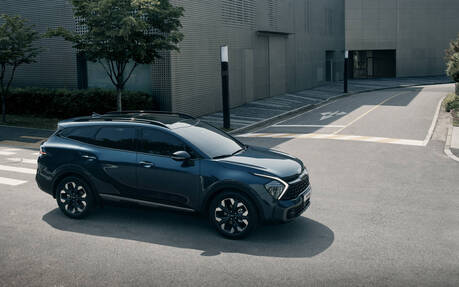
Similar to the new 2022 Hyundai Tucson, a Sportage Hybrid and Sportage Plug-in Hybrid (PHEV) will follow. We don’t have the specs yet, but the systems should be the same. The former will likely come with 226 horsepower and 258 pound-feet of torque combined, while the latter is expected to add a 13.8-kWh battery providing an EV range of just over 50 kilometres.
More Adventurous
Representing a first for Kia is an all-new Terrain Mode that debuts on the 2023 Sportage. It automatically adjusts the vehicle’s settings for any given road condition and environment, including snow, mud and sand. Out of Terrain Mode, the Sportage defaults to Drive Mode, with the driver selecting from Comfort, Eco, Sport or Smart sub-settings.
When it comes to the chassis, there’s a MacPherson strut type suspension up front while the rear gets a four-link setup. A new Electric Control Suspension enables continuous damping control in real time. Wheel sizes range from 17-19 inches. In addition, both the hybrid and PHEV variants will gain the company’s new E-Handling system, further enhancing dynamic performance during turning-in and turning-out cornering manoeuvres.
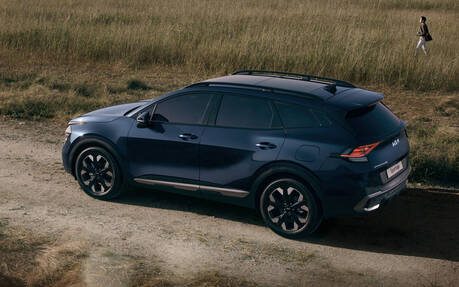
New Architecture and Cutting-edge Interior
Standing 4.66 metres long, 1.87 metres wide and 1.66 metres tall, the 2023 Kia Sportage is built on a new platform that is said to improve the driving experience significantly while offering generous interior space. In fact, headroom (1,000 mm) and legroom (1,050 mm) for second-row passengers are described as class-leading. Same thing for cargo capacity (final specs TBD).
By the way, the all-new Sportage is the first Kia vehicle to be available in long-wheelbase and short-wheelbase configurations, depending on the region. Expect only the former to be available in Canada, as is the case with the Volkswagen Tiguan.
Inside, the ultra-wide interface highlighting the new dashboard combines an available 12-inch centre touchscreen with a 12-inch instrument cluster equipped with the latest-generation TFT display technology for precise and clear graphics. The vehicle will also benefit from the latest over-the-air software and map updates.
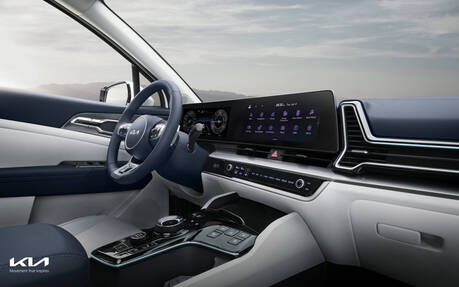
X-Line and GT-Line
For the first time in the history of this compact SUV, a model has been specifically designed to deliver extra versatility. Similar to the Sorento, the Sportage X-Line features a lugged bumper, side sill and curved roof rack. On the inside, a signature sage green colour is used along with bold quilting and black metal wood.
Opposite to the X-Line is the GT-Line model, which looks a bit sportier with standout body colours and an interior that plays off strong contrasts between black and white.
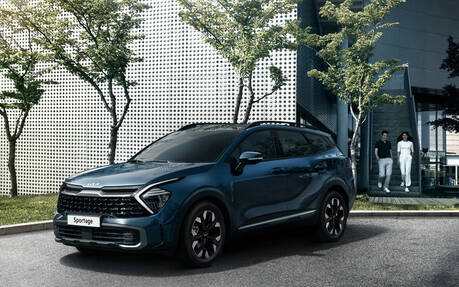
Increased Safety
Beyond the more rigid chassis and body structure, the 2023 Kia Sportage will actively protect occupants with an expanded range of safety and driver assistance features led by Forward Collision-Avoidance Assist with Pedestrian and Cyclist Detection.
Also notable are navigation-based Smart Cruise Control, Highway Driving Assist plus a new Blind-Spot Collision-Avoidance Assist system that can actively control the vehicle to help avoid a collision when drivers don’t react properly. A Blind-Spot View Monitor is included, too, increasing safety when changing lanes by displaying a real-time rear-side image of the vehicle in the instrument cluster.
